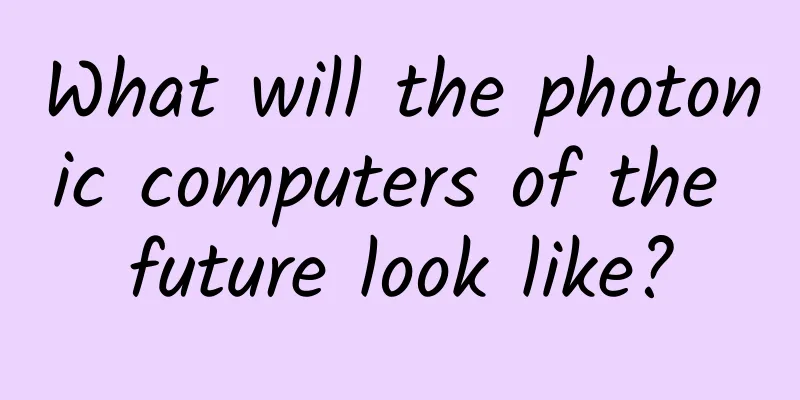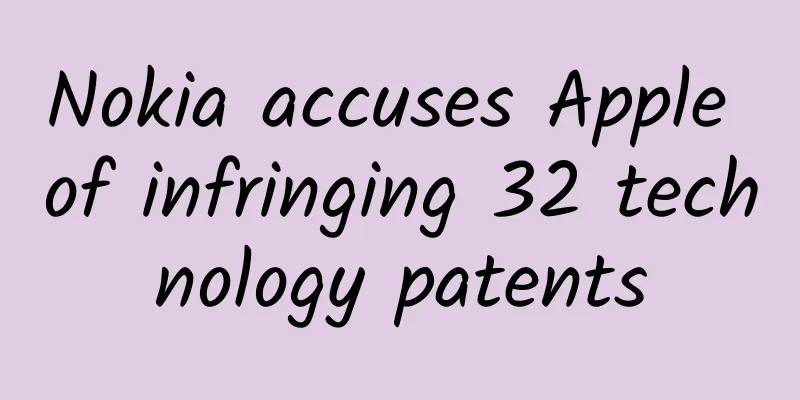What will the photonic computers of the future look like?

|
Photonic computers of the future Jiao Shuming Greater Bay Area University (Originally published on the "China Optics" WeChat account) We cannot live without various "mirrors" in our daily life, from the most common dressing mirror to myopia glasses, reading glasses, magnifying glasses, telescopes, and microscopes. Each mirror has its own strengths. Some can show you exactly the same in front of you, some can magnify tiny images, and some can make unclear blurry images clear, or bring distant images closer, or converge scattered sunlight to a point, which is what we have all heard of using a magnifying glass to make fire when surviving in the wild. A "mirror" is more professionally an optical device or an optical device. Different devices can manipulate light through various physical effects such as reflection, refraction, interference, diffraction, and scattering, just like playing a Rubik's Cube or performing magic tricks, turning bright light dark, turning dark light bright, and turning light in one direction to another, so that you can see various transformed images in front of you. The convex lens and concave lens mentioned in high school physics class can respectively make light converge or diverge, allowing the image to be freely enlarged and reduced, and are the most basic optical devices. Figure 1: Convex and concave lenses converge and diverge light In addition to the familiar "jobs", optical devices can also perform many unexpected and unexpected "jobs". Imagine that these lenses can also use light to do arithmetic problems, recognize faces, help unmanned vehicles drive automatically, and even build a photonic computer. Isn't it amazing? What are the advantages of photonic computers over electronic computers? The computers we use today, whether smartphones, laptops, or huge server systems in computer rooms, are all made up of semiconductor electronic devices, and the most basic unit on each chip is the transistor. A single transistor is only equivalent to a tiny switch, but when many are connected together, they can "concentrate their efforts on big things" and solve increasingly complex computing problems. After decades of development, the number of electronic devices integrated on each computer chip has become very large, with hundreds of millions of electronic transistors in a few square centimeters. There is limited room for improvement at such a high density, and it is difficult to cope with the increasing data computing needs of the world. Moore's Law, which states that "the number of transistors that can be accommodated on a chip will double approximately every 18 months, and the performance of the processor will double accordingly," is no longer so easy to fulfill. The total amount of electricity consumed by computers worldwide each year is also very large and cannot be ignored. Researchers are constantly exploring new approaches to computer design, and trying to use photonic computing to replace electronic computing in some scenarios is one possible option. In fact, computers are not "destined" to be built with electronic devices. During World War II and earlier, most computers in history were mechanical, consisting of levers and gears. Turing once successfully cracked the German army's code using a mechanical computer. In addition to optical computers and mechanical computers, researchers are also trying quantum computers, biological DNA computers, and chemical molecular computers. Quantum computer research represented by Google's "Platanus" and domestic "Jiuzhang" and "Zu Chongzhi" has been widely reported by the media in recent years. However, quantum computers and the photonic computers mentioned in this article are generally very different. Quantum computers do not necessarily use optical methods to achieve this, but can also use superconductivity, quantum dots, ion traps and other methods. Optical quantum computers mainly rely on microscopic quantum optics, while the photonic computers mentioned in this article rely on macroscopic classical optics. To put it bluntly, the former is mainly achieved through single or a very small number of photons, while the latter is achieved through beams of light composed of a very large number of photons. The number of photons can make a huge difference. Figure 2: Electronic computer chip As we all know, the speed of light propagation can reach 300,000 kilometers per second or close to this value. However, in electronic computers, the "reaction" when the signal is transmitted in the semiconductor device is often not so fast, and a moment of pause is required. Although this response time is also very short, it is still dwarfed by the almost instantaneous propagation of light signals. Photonic computers have taken the lead in terms of high speed and low latency. The most basic particles that make up photonic computers and electronic computers are photons and electrons, respectively. Although equally tiny, they are very different in nature. Electrons are fermions, photons are bosons. Electrons are like hot-blooded teenagers with strong hormone secretion in adolescence, and they are "hot-tempered". They are easy to interact with each other, collide with each other, and emit heat. If two circuits accidentally touch each other, they will "short-circuit". Photons are more like Buddhist uncles who are not competitive and tolerant. They don't easily "make trouble". Many different beams of light can pass through each other without interacting with each other. "You go your way, I go mine" without affecting each other, coexisting in the same space, and won't "electrify you" if they touch you. Crosstalk master Hou Baolin once told a joke in which a drunkard shone a flashlight into the sky, creating a beam of light, and said to another drunkard, "You said you are not drunk, so how dare you climb up this pillar?" The other drunkard replied, "I won't climb up. If I climb up and you turn off the flashlight, I will fall down!" Figure 3: When two beams of light meet, they do not short-circuit, but pass through each other without affecting each other. Since photons have such a "character", we can use many light beams that do not interfere with each other to perform large amounts of parallel data calculations at the same time. We do not have to blindly increase the density per unit area like electronic devices, and simply rely on the simple and crude method of "more devices, more power" to improve computing power. Electronic computers are often like squeezing all cars into one lane, while photonic computers have a wide highway with multiple lanes. At the same time, since photons do not easily interact with each other, optical computers will only consume very little energy, just like a pair of myopic glasses that do not need to be plugged in or have batteries installed. They can work passively as long as there is light. It is estimated that photonic computers are expected to achieve performance indicators such as computing speed and energy utilization that are tens or even hundreds of times that of existing electronic computers[1]. In addition, in some specific places, such as medical equipment rooms and radio observatories, electronic equipment will inevitably emit a certain amount of electromagnetic radiation, which may interfere with the normal operation of the equipment. Photonic computers will be a safer choice. In other scenarios, the signals we want to process or the data we want to calculate are themselves represented in optical form. For example, the light field of the image of a natural object is converted into electronic data after being photographed by a digital camera for processing by an electronic computer. When the processed photo is displayed on the screen, it is converted back into the form of a light signal. If a photonic computer is used directly to process the light signals in cameras, displays, and optical communications, the trouble of multiple conversions between photoelectric signals can be avoided. How do photonic computers work? No matter what kind of computer it is, it is a machine used to perform various computing tasks. The most basic work to be completed is naturally addition, subtraction, multiplication and division, or more specifically, addition and multiplication. Many seemingly complex computing processes can ultimately be decomposed into a large number of basic operations of addition and multiplication. There are many different ways to perform addition or multiplication in optics. For example, a room is completely dark. When you turn on the first light, the room becomes brighter. When you turn on the second light, the room becomes even brighter. At this point, the brightness in the room is the sum of the brightness of the two lights. This is an addition done in a simple optical way. If the intensity (or brightness) of light at different positions is used to represent the size of a value, a magnifying glass-type convex lens can bring together light from different positions, which is equivalent to achieving addition using light. When light hits the surface of an opaque object, part of it will be absorbed and part of it will be reflected. The intensity of the reflected light is equal to the intensity of the incident light multiplied by the reflectivity. The reflectivity can be adjusted. For example, under the scorching sun in summer, we will easily feel hot when wearing black clothes because the black surface has a higher light absorption rate and a lower reflectivity. White clothes are the opposite and are more comfortable to wear. So what kind of value do we want to multiply? We just need to appropriately encode the reflectivity at different positions on the surface of the reflecting object and set it to the corresponding size, so that the light can complete the multiplication in a natural way. We can use a detector to measure the intensity of the reflected light and get the product result. Of course, we can also use transparent objects. The intensity of light passing through the other side is equal to the incident light multiplied by the transmittance. We can just adjust the transmittance at different positions to the value to be multiplied. In the figure below, the optical device that first adjusts the light reflectivity or transmittance at different positions, multiplies the values at each corresponding position in parallel, and then sums these products with a lens is a simple "optical multiplication and addition calculator." Figure 4: An optical multiply-add calculator using lens convergence [2] In addition to addition, subtraction, multiplication and division, optics can often provide a shortcut to more complex calculations compared to electronic calculations. For example, in mathematics, the two-dimensional Fourier transform requires designing an algorithm, writing program code, and then running the program for a certain amount of time to obtain the result. However, in optics, the result can be obtained at the speed of light through just one lens, because the diffraction propagation method of light happens to be a natural way to realize the Fourier transform [2]. In recent years, as a simulation of the working mode of a real human brain, deep learning neural networks have been widely used in various fields and have become the most mainstream artificial intelligence model. They are usually implemented in the form of software algorithms on electronic computers. Researchers have also implemented simple multi-layer neural networks in an all-optical way. There are no circuits and electronic devices in the entire network, only optical paths and optical devices. The optical multiplier mentioned above is also used to simulate the signal transmission between two adjacent layers of neurons [3]. In optical laboratories, researchers often use lasers. Since light can have different frequencies (or wavelengths), they correspond to different colors within the range visible to the eye. Ordinary sunlight and lamps used in daily life are mixed with various frequencies of light, while the frequency of lasers is relatively single. For example, green laser means a purer green, which can form a highly concentrated light beam with relatively strong energy. With lasers, more diverse optical computing systems have been designed. An ordinary convex lens device like a magnifying glass is thick in the middle and thin on both sides, with a symmetrical regular shape. We can intelligently optimize the device to different thicknesses at different positions. Such an uneven device that is neither a convex lens nor a concave lens can modulate light more complexly and flexibly. It is called a diffractive optical device. Moreover, a "string" of such devices can be cascaded together, and each layer adjusts the light field in turn. The final effect achieved is far more than just "gathering sunlight to light a fire". In the system named "Optical Diffraction Neural Network" in the figure below, when the light intensity distribution at different positions of the input plane represents patterns of different numbers, at the output end on the other side of the system, the light is modulated by a series of diffraction optical devices with optimized design, and can converge to different positions according to different numbers. Wherever the light points to tells us which number it is, and will directly display the results of digital classification and recognition. In such a system, light seems to have intelligence and can recognize numbers like humans. Artificial intelligence is no longer exclusive to electronic computers. Figure 5: Light diffraction neural network for digit recognition [4] Other researchers are exploring the use of the system that looks like a "sewer pipe network" below for optical computing. Each blue pipe is called an optical waveguide, and it transmits light instead of water. Under normal circumstances, light will "behave" in a waveguide from one end to the other, but when two waveguides are very close to each other, light signals in the two waveguides will partially run into each other. The designer intentionally allows the two waveguides to interfere with each other many times, constructing many basic units called Mach-Zehnder interferometers, and connecting them together to form a network. The original brightness of the light at each leftmost waveguide input port represents the size of each input data value. After many times of light interference, the light in each waveguide may become brighter or darker. By properly setting all interferometer units and measuring the brightness of each output port on the rightmost side of the entire network, the desired calculation result can be obtained. For example, if the input is the size of each element of a vector, a new vector is obtained, which represents the output result after the input vector is multiplied by a matrix. Figure 6: Mach-Zehnder interferometer network for optical computing [5] Optical systems like Mach-Zehnder interferometers are originally large in size, occupying the size of a whole table. If many of them are connected together, they will probably occupy an entire room, just like the electronic computer when it was first invented decades ago. However, through this waveguide implementation, the system size will be very small, reaching the micron level or even smaller, and many Mach-Zehnder interferometers can be integrated on a small chip. Silicon-based photonics allows photonic chips to be designed and processed in a similar way to electronic chips. Various optical devices can become smaller and smaller and integrated together. A photonic chip is small but has all the necessary functions. This paves the way for the use of photonic computing in terminal portable consumer products (such as mobile phones and tablets) in the future. “Smart glass” is also a cleverly designed optical computing device[6]. In a piece of pure glass, light can propagate unimpeded from left to right. However, once many impurities containing another material are added, it is like adding many pieces of pudding to a cup of milk tea. Since the impurities and glass have different reflectivity and refractive index, when light goes around these “obstacles”, it will “go east, go west, bump left and right” like walking through a maze, changing the original normal propagation path. If the position, size and shape of all the impurities in this “maze” are reasonably designed, most of the photons can still converge to the target position in the end, indicating the classification and recognition results just like the optical diffraction neural network. Figure 7: (a) Optical computing device using smart glass scattering medium[6]; (b) Light bumps into obstacles and breaks through the maze[6] All the optical calculation methods mentioned above can be classified as analog optical calculation, that is, directly using the brightness of light or other physical quantities to represent the value to be calculated. The electronic computers we usually use usually use logic gate digital calculation, that is, first convert the daily decimal values to be processed into a binary digital sequence containing 0 and 1. For example, 28 is represented by 11100 in binary, and 2 is represented by 10 in binary. There is a classic saying that "there are 10 kinds of people in the world, one who understands binary and the other who does not." Then each logic gate can handle simple operations between 1 and 0, such as AND gates, OR gates, NOT gates and other types. Their input and output are 0 or 1, but the calculation rules are different. Although the function of a single logic gate is very simple, many logic gates are connected together to form a logic circuit system to complete more complex calculations. One of the keys to the rapid development of electronic computers to today is that scientists have discovered that transistors, an electronic device, can easily implement logic gate operations in hardware. Figure 8: Various types of logic gates In the science fiction novel "The Three-Body Problem" by the famous writer Liu Cixin, "Qin Shi Huang" on a planet in the Three-Body Galaxy used 30 million Qin soldiers to form a "human computer" in order to predict the fate of his dynasty. Each soldier waving a black and white flag to represent 0 or 1 acted as a logic gate. Two soldiers were responsible for signal input, and one soldier was responsible for signal output. The soldiers raised flags according to the rules, and the black and white flags rose and fell one after another. The speed of the computer's operation depended on the soldiers' reaction speed. In another science fiction novel "China Orbit" written by Professor Wu Yan, Director Gu Zhengping of the institute is studying a new type of "solution computer". The huge computer system contains various bottles and jars filled with colorful solutions. There are a large number of two hostile nematode microorganisms in the solution, one represents binary 0 and the other represents binary 1. During their growth, they devour, repel and coexist with each other. The programmer completes various logic gate calculation functions by controlling the reactions in the solution, and the final calculation output is displayed as the color change of the solution. Regardless of the scientific plausibility of the plots in science fiction, they at least give us a revelation: logic gates do not necessarily have to be implemented electronically. In optics, although there is no device directly corresponding to electronic transistors, researchers are also exploring the use of various different solutions to implement logic gates, such as using semiconductor optical amplifiers or optical waveguides. Optical logic gate computers are also being tried as another possible path [7]. Some people say that the 19th century was the mechanical age, the 20th century was the electronic age, and the 21st century may be the photon age [8]. Although photonic computers are currently mainly in the research and development stage in laboratories of universities, research institutions and start-up companies, and commercial products are rarely seen, their broad prospects in the future have attracted attention from all walks of life. One day in the future, if you encounter a problem that you cannot solve, perhaps light can tell you the answer. References: 1. H. Zhou, J. Dong, J. Cheng, W. Dong, C. Huang, Y. Shen, Q. Zhang, M. Gu, C. Qian, H. Chen, Z. Ruan, and X. Zhang, “Photonic matrix multiplication lights up photonic accelerator and beyond,” Light Science & Applications 11, 30 (2022). 2. J. Wu, X. Lin, Y. Guo, J. Liu, L. Fang, S. Jiao, and Q. Dai, “Analog optical computing for artificial intelligence,” Engineering 10, 133-145 (2022) 3. Y. Zuo, B. Li, Y. Zhao, Y. Jiang, Y.-C. Chen, P. Chen, G.-B. Jo, J. Liu, and S. Du, "All-optical neural network with nonlinear activation functions," Optica 6(9), 1132-1137 (2019) 4. X. Lin, Y. Rivenson, NT Yardimci, M. Veli, Y. Luo, M. Jarrahi, and A. Ozcan, “All-optical machine learning using diffractive deep neural networks,” Science 361(6406), 1004-1008 (2018). 5. Y. Shen, NC Harris, S. Skirlo, M. Prabhu, T. Baehr-Jones, M. Hochberg, X. Sun, S. Zhao, H. Larochelle, D. Englund, and M. Soljačić, “Deep learning with coherent nanophotonic circuits,” Nature Photonics 11(7), 441-446 (2017). 6. E. Khoram, A. Chen, D. Liu, L. Ying, Q. Wang, M. Yuan, and Z. Yu, “Nanophotonic media for artificial neural inference,” Photonics Research 7(8), 823-827 (2019). 7. S. Jiao, J. Liu, L. Zhang, F. Yu, G. Zuo, J. Zhang, F. Zhao, W. Lin, and L. Shao, "All-optical logic gate computing for high-speed parallel information processing," Opto-Electronic Science 1(9), 220010 (2022). 8. Layout of photonic chips with a strategic vision of scientific and technological revolution, Outlook, 2022, No. 2 |
<<: If your body has these 4 symptoms, it means you are very healthy!!!
>>: Qingming Festival: You need a fire prevention guide
Recommend
ChatGPT is equivalent to a 9-year-old human child. Does it really think of itself as a human being?
If you ask what the hottest technology terms on t...
How to build a private domain traffic matrix to acquire a large number of customers?
The author and a good friend from a ToB company t...
China's entire financial system: a comprehensive list of financial regulation, institutional operations and products
Comprehensively understand domestic financial sup...
My neck makes a crackling sound when I turn it. Is it cervical spondylosis? The truth is...
Myth: "If you hear a crackling sound when yo...
Creative Guide for Information Flow Promotion in Tourism Industry
In the blink of an eye, it is the end of March. T...
Do you remember the "sour soup" incident? To prevent fumonisin poisoning, be sure not to eat this kind of food
What was originally a wonderful dinner for relati...
Unveiled zone-free cleaning technology, Haier's smart cleaning ecosystem completes continuous upgrade
As humans delve deeper into the concept of the In...
What are the page ranking factors related to keywords?
The page ranking factors related to keywords are ...
Financial APP, how to open source for users
Today, the financial APP market has reached a rel...
How much does it cost to rent a broadband server in Zhejiang?
How much does it cost to rent a broadband server ...
Jie Lan Lu: In the second half of 2024, Xiaomi ranked first with 92.23 points in the after-sales service survey of new energy vehicles
Recently, the automotive market data research orga...
Albert follows Friends and speaks English easily in 100 days
Albert follows Friends and speaks English easily ...
iOS users reject ad tracking, advertisers turn to Android
App Tracking Transparency (ATT) is a new feature ...
14 business courses on wealth and wisdom in life by Ai Cheng
Help you achieve your goals efficiently and lead ...









